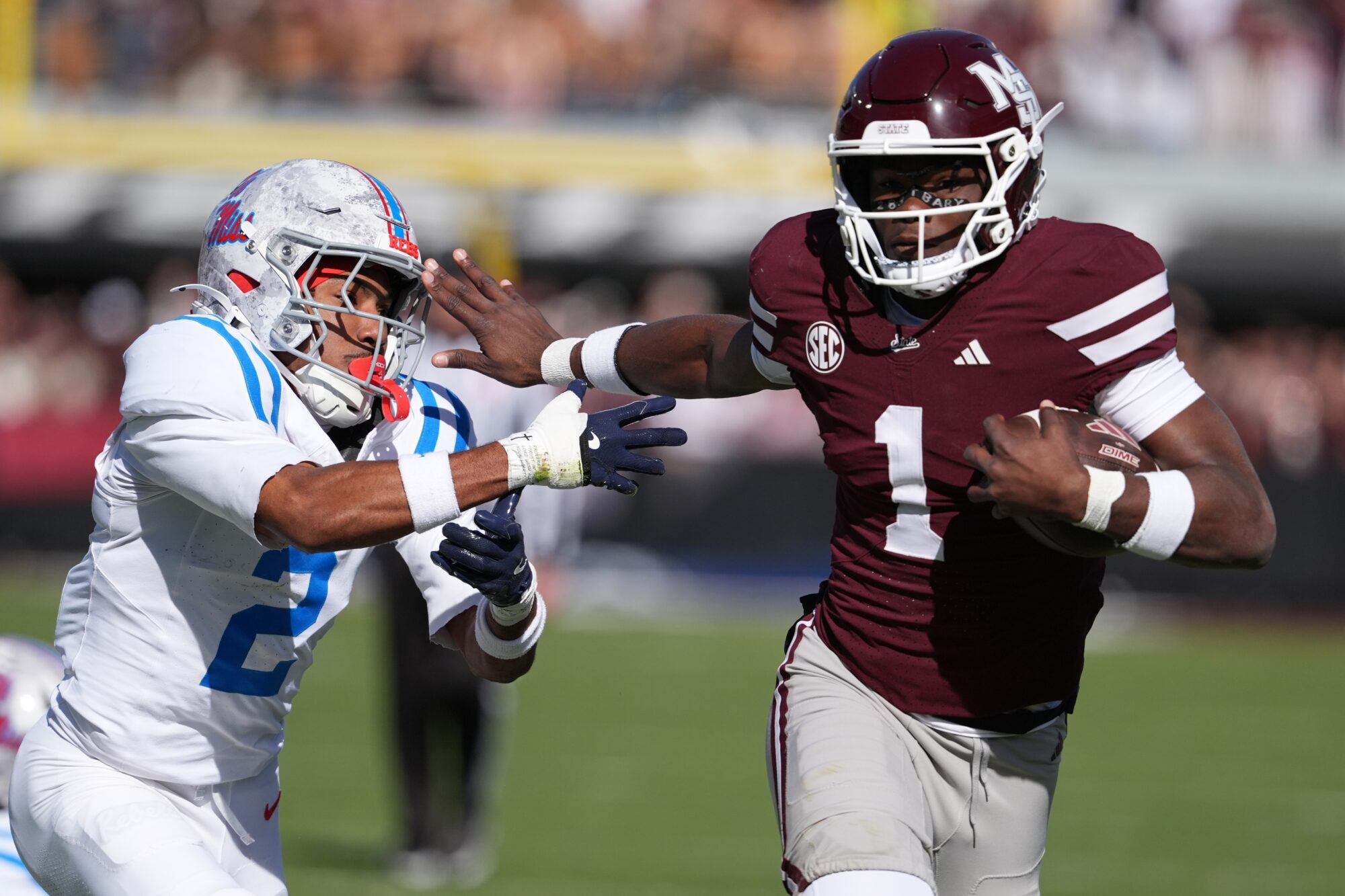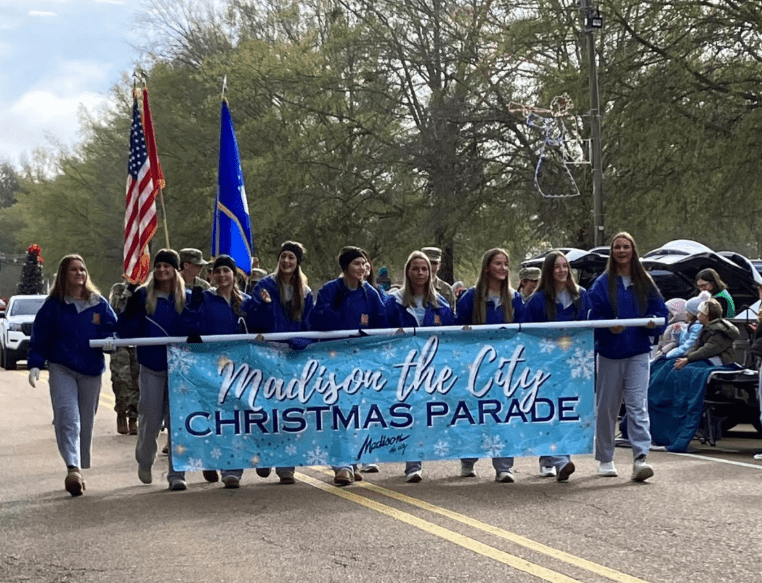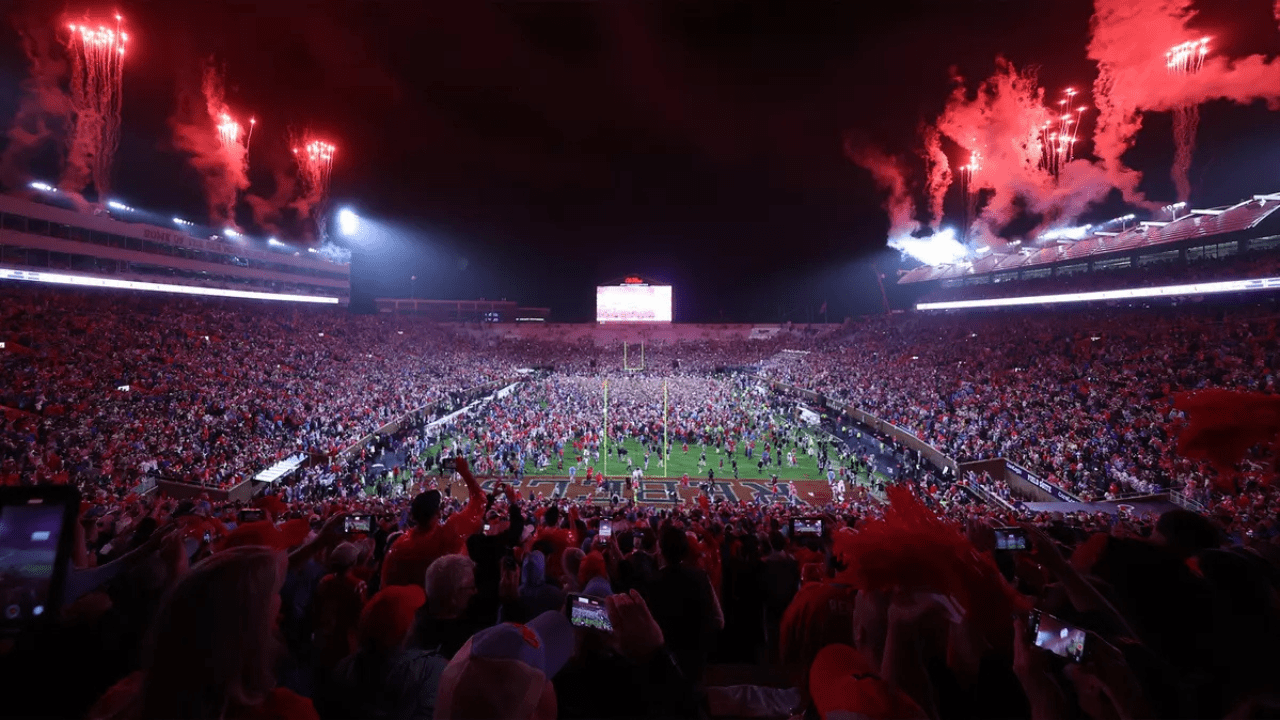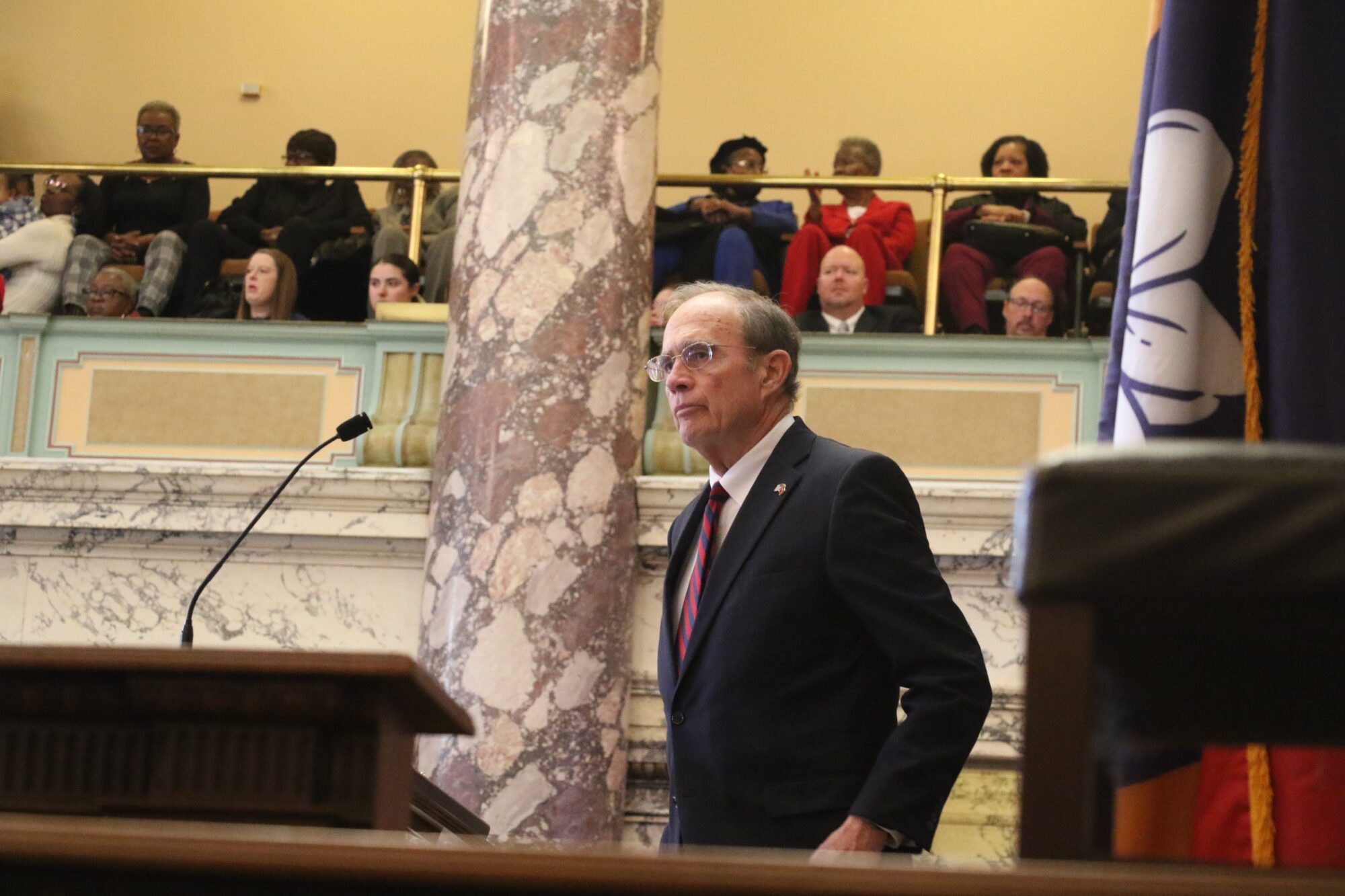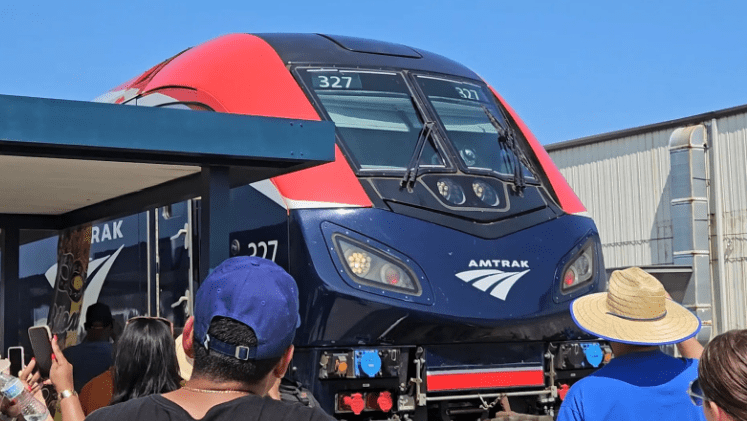
(Photo by Susan Marquez)
- Susan Marquez shares her experience riding on the inaugural run of the new passenger rail service between New Orleans and Mobile with four stops on the Mississippi Coast.
While it was only 6:30 a.m. on a Saturday morning, the train station in New Orleans was alive with activity. As we walked into the station, we heard the sounds of a New Orleans brass band and smelled the chicory coffee served with a hot breakfast.
The excitement was thick as journalists, dignitaries, and politicians mingled. Soon it was time for speeches. Members of the Mississippi Rail Commission, including president Knox Ross (former mayor of Pelahatchie), along with Roger Harris, the president of Amtrak, and Mississippi U.S. Senator Roger Wicker, were among those who spoke to the crowd before everyone was led out to the train platform on a red carpet with confetti floating through the air.
It was all for the inaugural run of the Amtrak Mardi Gras Service, the new passenger line that runs from New Orleans to Mobile and back.
This is the first time there has been rail service from New Orleans to Mobile since Hurricane Katrina destroyed the tracks twenty years ago, and according to Wicker, it was ten years in the making.
“This was a truly bipartisan project. Democrats and Republicans came together in a big way to make this happen with negotiations and planning across three states and on the Federal level,” Wicker said.
Now, passengers can board the train in New Orleans and ride along the Mississippi Gulf Coast. The train stops in Bay St. Louis, Gulfport, Biloxi, and Pascagoula to drop off or pick up passengers before the train reaches its final destination in Mobile.
Mark Magliari is the senior public relations manager in Amtrak’s Chicago office. He explains that at one time, the route went from New Orleans to Pensacola.
“The plan is to extend this line from Mobile to Pensacola in the coming years.”
According to Magliari, there are also plans to extend the route from New Orleans to Baton Rouge. Currently, there is bus service from Baton Rouge to New Orleans for those who want to ride the train to the Gulf Coast.
There were easily a dozen or so cars for the inaugural run, but regular runs will have three passenger cars. More cars will be added as the demand increases. That may be sooner rather than later, as tickets for the first run for the public on August 18 were sold out both ways within the first few hours they went on sale.
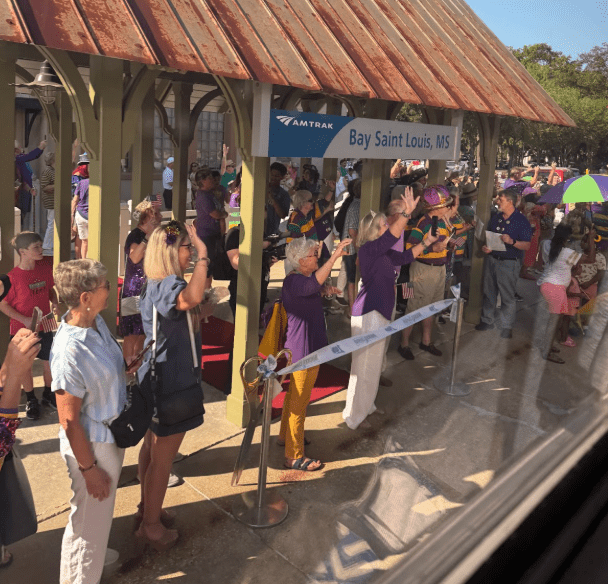
The first stop on our trip was in Bay Saint Louis. A couple of miles before we got to town, we noticed cars pulled over on the side of the road. Families with cell phones were standing next to the cars, making videos of the train as it passed. Many people waved, and some held up “Welcome Amtrak” signs.
The excitement began to build as we rolled into town. A high school marching band was playing and cheerleaders were shaking pom poms. Hundreds of residents in Mardi Gras attire were gathered to greet the train as it rolled into the station.
A group of women led by Tish Haas Williams boarded the train, all dressed in sparkles and feathers, in true Mardi Gras fashion. They were with the Hancock County Chamber of Commerce, where Tish serves as the executive director.
“We are really excited about this train,” she said. “It is going to make Bay Saint Louis accessible to so many people!”
After the politicians and dignitaries made their speeches, the train began its eastward journey.
The next few stops were no more than a half hour apart. Gulfport had the largest crowd of all at the train station, and folks on Highway 49 didn’t seem too bothered by the fact that the train blocked the highway for about 15 minutes. Then it was on to Biloxi and Pascagoula before heading into Mobile.

The views of the water along the Mississippi Gulf Coast were beautiful. There were shrimp boats, pleasure boats, and jet skis, some riding along the shoreline and waving at the train. There was plenty of wildlife as well, from fish jumping to egrets, seagulls, and pelicans.
Arriving in Mobile, we passed a shipyard and rolled into downtown. There were people waiting to greet the train next to the platform. A brass band played while young ladies in hooped skirts and floppy hats smiled at the crowd.

The band led us into the convention center, where the City of Mobile provided champagne upon arrival, along with a buffet lunch. More speeches were given. Roger Wicker joked it was his sixth speech of the day. There was mild ribbing that Mobile was the site of the first Mardi Gras.
The return trip back to New Orleans was pleasant. I spoke with Eric Cova, director of communications for Smart Growth America, a Washington D.C.-based nonprofit which, according to the organization’s website, “helps create healthy, prosperous, and resilient places to live for all people through research, advocacy, and direct community support.” Their work spans housing and land use, transportation, and economic development to find solutions to communities’ most pressing needs. Eric shared a timeline with me on the rail service from New Orleans to Mobile.
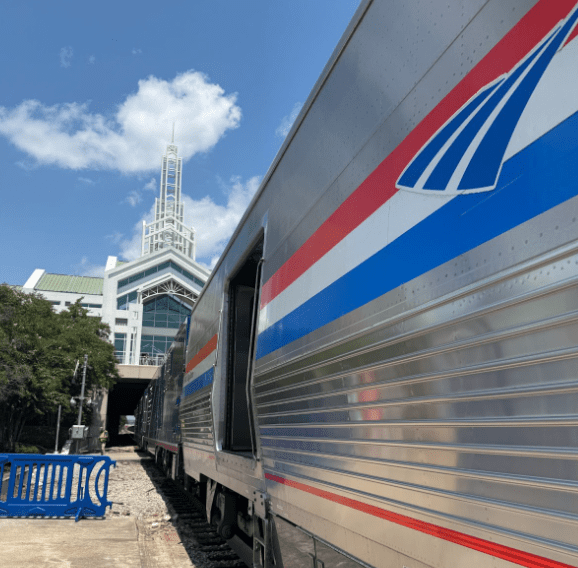
David Peter Alan, a New York-based attorney who has written for Railway Age for over twenty years, filled me in on the politics of the line.
“This is a good thing for the area,” he said, although he isn’t convinced it will last.
I’m not so sure about that. With the excitement and enthusiasm I saw from Amtrak employees, dignitaries, politicians, and the crowds that gathered at the train stations along the route, I believe the Amtrak Mardi Gras Service will transport passengers along the Gulf Coast for a long time to come.
Our train rolled into the New Orleans train station at 6:30pm, right on time. A jazz band greeted us, as we were gifted with Hubig pies and water. It was a fun day, and I believe the possibilities for the future are endless.
